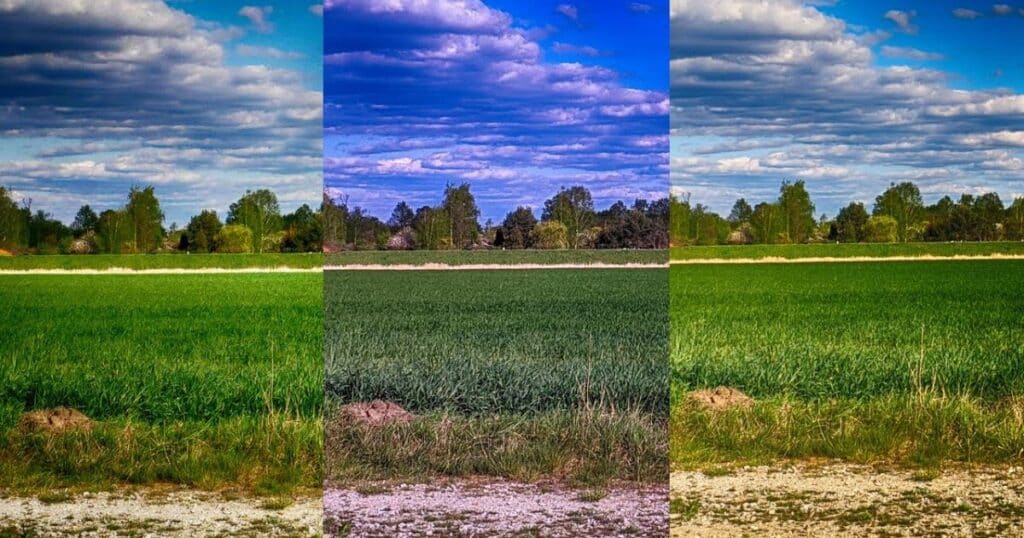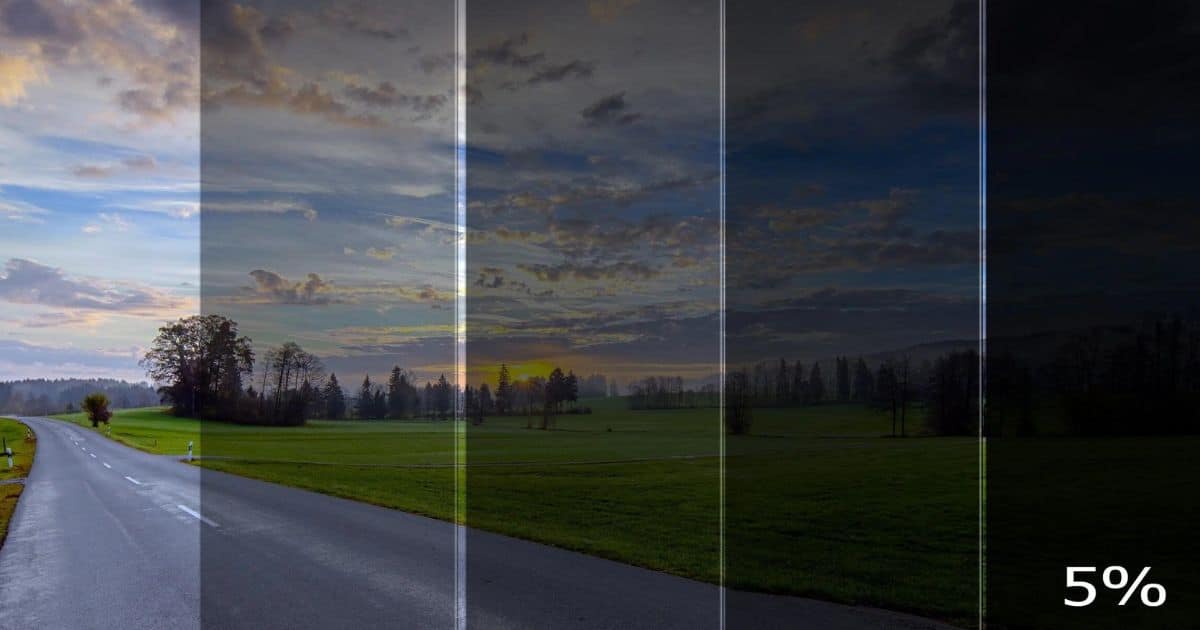Photography filters modify light entering the camera to enhance colors or achieve creative effects. They play a crucial role in manipulating captured light, allowing photographers to control the visual impact of their images.
Ever wondered, What is Kelvin in photography? Kelvin is not just a unit of temperature; it influences the color temperature of light in an image. In photography, Kelvin is the scale used to measure light sources’ color temperature, determining if photos appear warm and golden or cool and blue.
Kelvin in photography refers to the color temperature of light measured in Kelvins (K). Lower Kelvins create warmer tones (2000-4000K), ideal for a sunset atmosphere. Higher Kelvins produce cooler tones (5000-10,000K), perfect for a crisp, daylight appearance.
Understanding, What is Kelvin in Photography?
Kelvin in photography refers to the measurement of color temperature. It determines the warmth or coolness of the light in your photos. The Kelvin scale helps photographers achieve the desired mood and tone by adjusting the color temperature of the light sources.
The basics of what Kelvin is in photography are crucial for creating visually appealing images. By grasping this concept, photographers can effectively use Kelvin adjustments to enhance the overall impact of their photos, ensuring the right balance of warm and cool tones.
How Does Kelvin Impact Color Temperature in Photography?
Kelvin significantly influences color temperature in photography. It’s a scale that measures the warmth or coolness of light. In photography, lower Kelvin values result in warmer tones, while higher values produce cooler tones.
Understanding this impact is crucial for achieving the desired mood in your photos. Adjusting Kelvin settings allows photographers to control the color temperature, creating a visual atmosphere that suits the intended style of the image.
Exploring the Kelvin Scale: A Photography Perspective
Exploring the Kelvin Scale in photography reveals its role in determining the color temperature of light. The Kelvin scale ranges from warm tones (lower values, around 2000-4000K) to cooler tones (higher values, 5000-10,000K).
In a photography perspective, understanding this scale empowers photographers to create specific moods and tones in their images. With the Kelvin scale, photographers can control whether their photos appear warm and cozy, like a sunset (lower Kelvin), or cool and crisp, resembling daylight (higher Kelvin).
Why is Kelvin Important for Achieving Desired Tones in Photography?

Kelvin is crucial in photography because it determines the color temperature of light in your photos. Achieving the desired tones relies on understanding Kelvin values. Lower Kelvins, around 2000-4000K, create warm tones, while higher Kelvins, 5000-10,000K, produce cooler tones. Mastering Kelvin helps photographers control the visual impact of their images.
The importance of Kelvin lies in its role in setting the mood and atmosphere of a photograph. Whether you want a warm, sunset-like glow or a cool, crisp daylight appearance, manipulating Kelvin allows photographers to craft the tones that best suit their creative vision.
Setting the Mood: Utilizing Kelvin in Photography Lighting
In photography, Kelvin plays a vital role in setting the mood through lighting. Different Kelvin temperatures create distinct atmospheres, with lower Kelvins (2000-4000K) giving a warm and cozy feel, akin to a sunset. Higher Kelvins (5000-10,000K) provide a cooler tone, ideal for achieving a crisp, daylight ambiance.
Adjusting Kelvin in your lighting setup empowers you to control the emotional impact of your photos. Whether it’s a romantic evening scene or a bright, energetic shot, mastering Kelvin in photography lighting allows you to shape the mood and evoke the desired emotions in your images.
Applying Kelvin Adjustments in Your Photography
Kelvin adjustments are key to controlling the mood in your photos. Lower Kelvin values, around 2000-4000K, bring warmth for sunset scenes, while higher values, 5000-10,000K, offer cool tones for a daylight feel.
When using Kelvin adjustments, consider the desired atmosphere. Experiment with lower Kelvins for a cozy ambiance and higher Kelvins for a crisp, refreshing look. By mastering these adjustments, you can enhance the visual impact of your photography.
Warm vs. Cool Tones – What Works Best?
Kelvin in photography influences the color temperature of light. Lower Kelvin values (2000-4000K) create warm tones, ideal for a cozy, sunset-like feel. Higher Kelvins (5000-10,000K) produce cool tones, giving photos a crisp, daylight appearance. Understanding this balance helps photographers achieve the desired mood in their images.
| Kelvin Range | Tone | Ideal Use |
| 2000-4000K | Warm | Sunset |
| 5000-10,000K | Cool | Daylight |
The Role of Kelvin in Photography
White balance is crucial for accurate colors in photos. Kelvin in photography allows you to fine-tune white balance, determining if your images appear warm or cool. You can also read about Moire in Photography if you are uaware of it.
Understanding the Kelvin scale helps photographers achieve desired color temperatures. Navigating white balance with Kelvin empowers you to create visually impactful and aesthetically pleasing photographs.
Kelvin in Photography Demystified to Enhance Visual Impact
Kelvin in photography is the measurement of color temperature, influencing the warmth or coolness of your images. Understanding Kelvin helps photographers achieve the desired visual impact by manipulating the tones in their photos.
Demystifying Kelvin in photography involves grasping the concept of warm and cool tones. By mastering the Kelvin scale, photographers enhance the visual appeal of their images, creating a more captivating and intentional aesthetic.
Debunking Myths about Kelvin in Photography

Many photographers believe that higher Kelvin values always result in better photos. In reality, it’s about understanding the desired mood and adjusting Kelvin accordingly. Debunking this misconception helps photographers achieve more nuanced and intentional color tones in their images.
Another common myth is that Kelvin adjustments are only crucial for professional photographers. Any photography enthusiast can benefit from grasping the basics of Kelvin, as it empowers them to enhance the visual impact of their photos by controlling color temperature.
Frequently Asked Questions
What is Kelvin in Photography?
Kelvin in photography refers to the measurement of color temperature in light sources.
How Does Kelvin Affect Photography?
Kelvin influences the warmth or coolness of colors in an image, shaping its overall tone.
Why is Kelvin Important in Photography?
Understanding Kelvin is crucial for achieving the desired mood and color balance in your photographs.
How Can I Use Kelvin in Photography?
Adjusting Kelvin settings allows you to control the color temperature, enabling you to create specific visual effects in your photos.
Conclusion
What Kelvin is in photography is essential for controlling the color temperature of light in your images. The Kelvin scale helps photographers achieve the desired warm or cool tones, impacting the overall mood and visual appeal of their photos.
Kelvin in photography serves as a practical tool for adjusting white balance, allowing photographers to adapt to different lighting conditions. Mastering the concept of Kelvin empowers photographers to create visually stunning images with the perfect color temperature for any given scenario.
